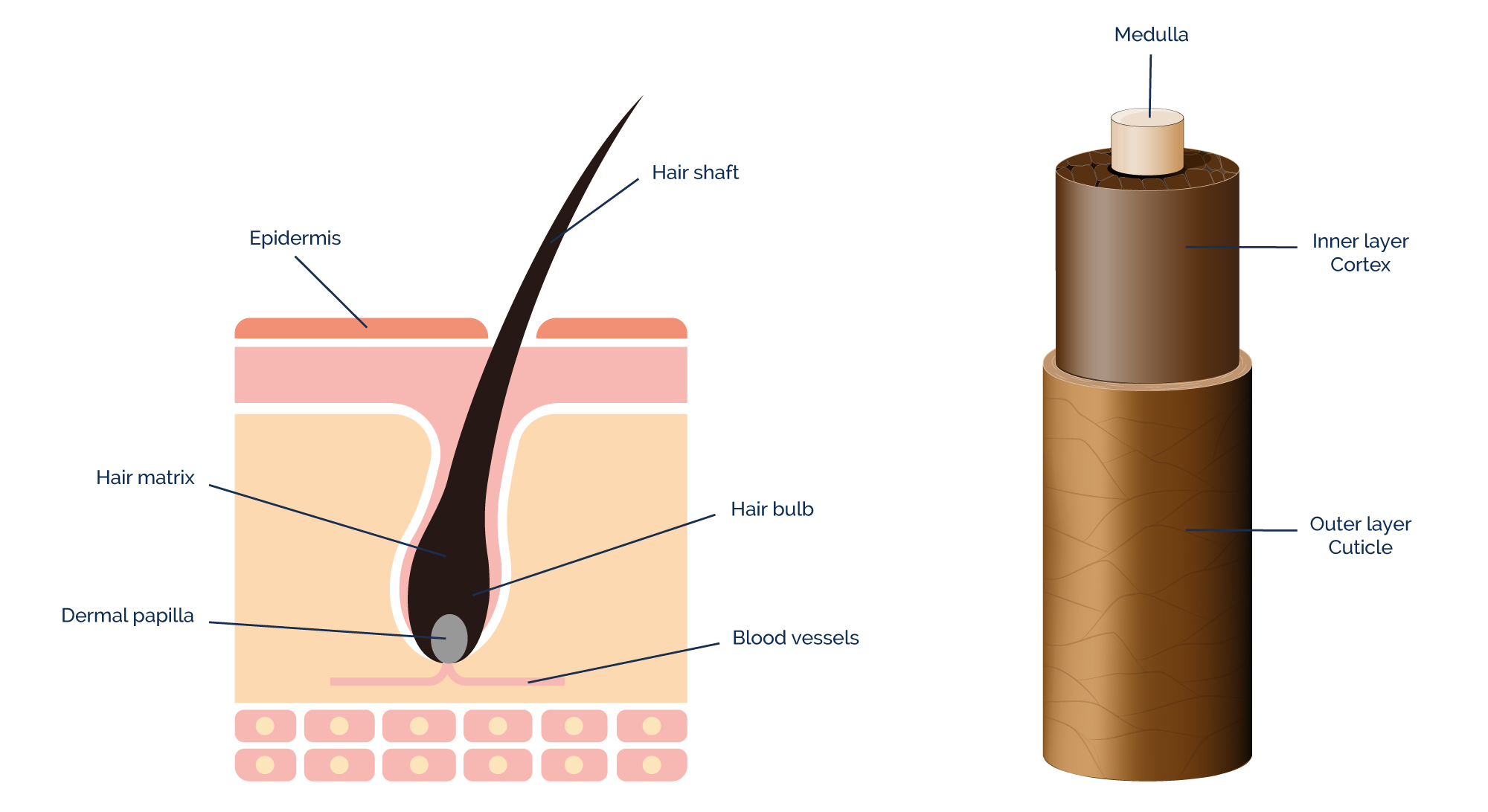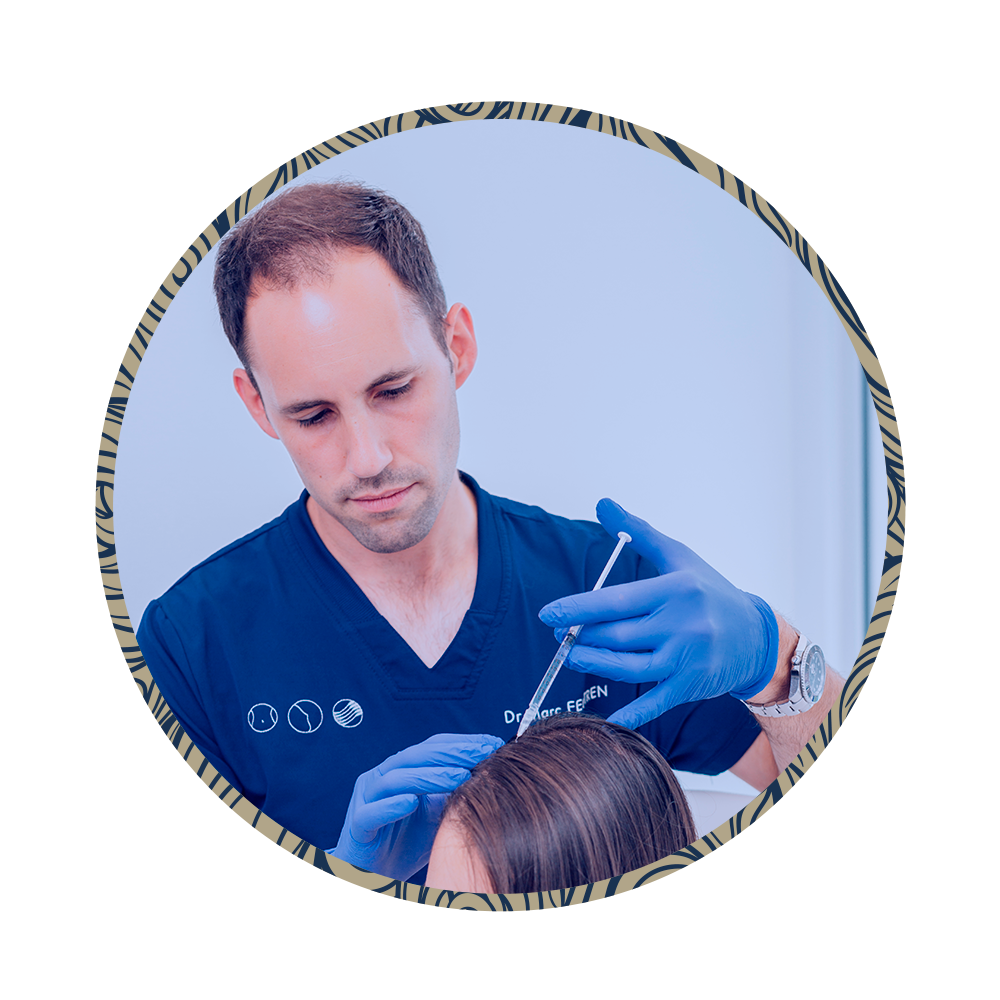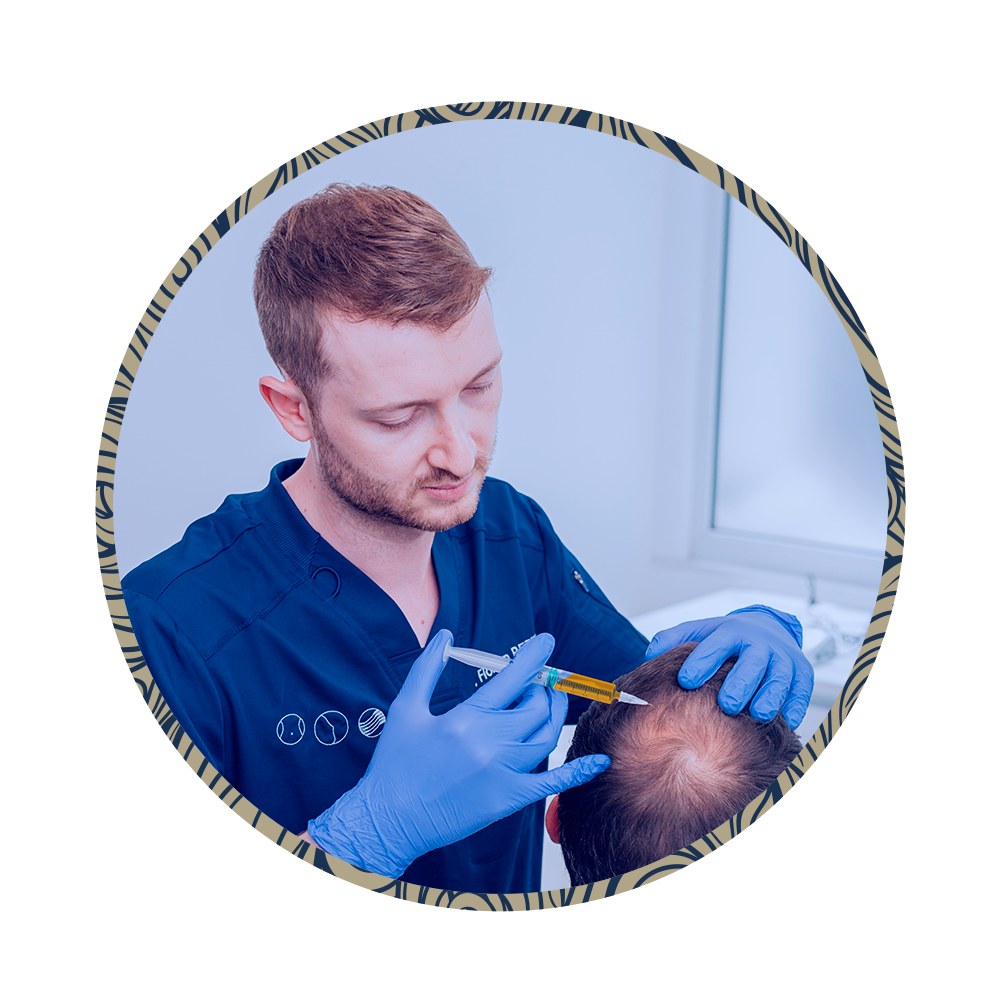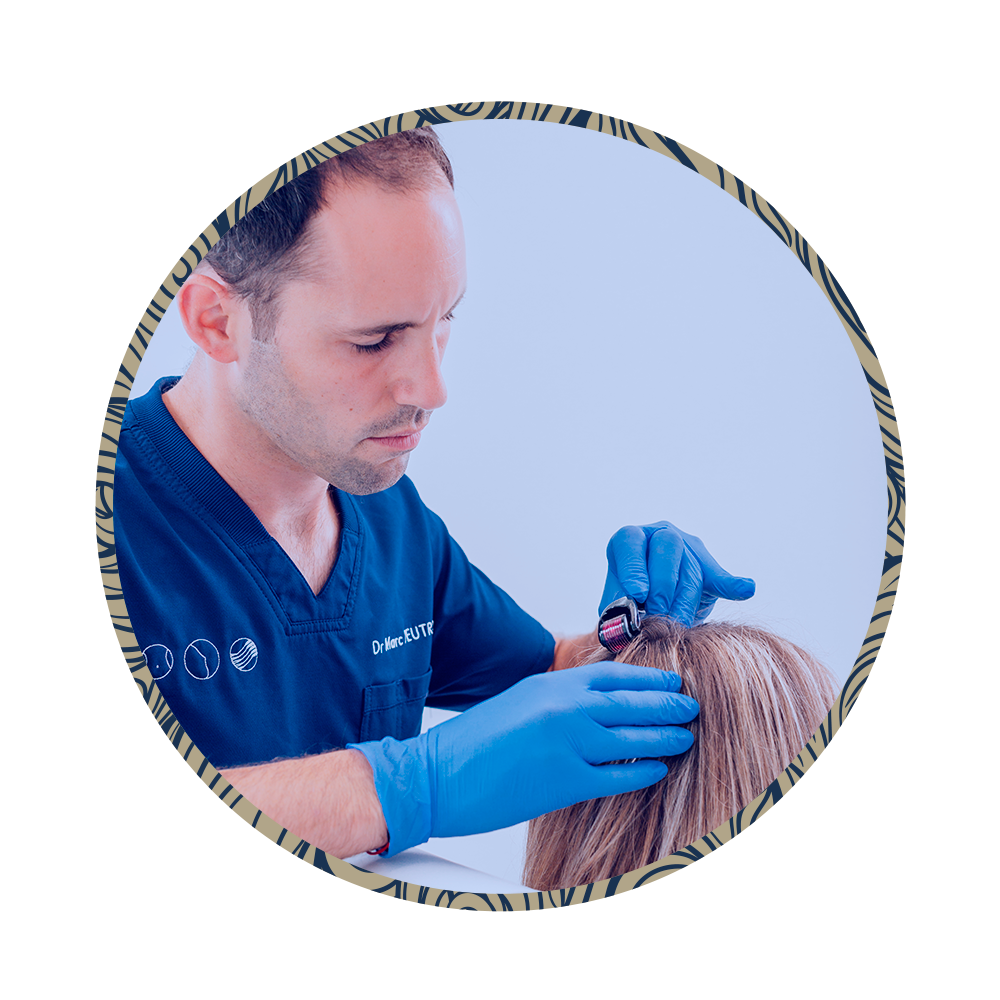Understanding the anatomy and the hair cycle
The hair anatomy

The hair is composed of a shaft outside the scalp and a portion under the skin, the hair follicle, which includes the papilla and the bulb.
The dermal papilla is an essential zone of the pilosebaceous follicle, because it contains the stem cells responsible for the self-renewal of the hair. The intense division of these cells is responsible for the hair growth cycle.
The bulge is the structure where stem cells differentiate, progress to the surface and then transform into keratinocytes to build the stalk.
It also includes melanocytes that produce melanin responsible for hair pigmentation.
There is also a cone, called the "dermal papilla", which redistributes blood and nutrients to the bulb.
The sebaceous gland produces sebum which forms a lipid film preventing hair dehydration.
The pilosebaceous follicle is attached by a small muscle (the arrector pilaris muscle) to the dermis and to the bulbar region. It is responsible for straightening our hair in certain special circumstances.
The hair shaft is made up of 3 parts:
- the outer layer or cuticle,
- the middle layer or cortex,
- the inner layer called medulla.
The hair cycle

The hair cycle is composed of 3 phases:
Anagen : The active growth phase of hair. It usually lasts 3 years, with a growth of about 1.2 cm per month, or 15 cm per year. This phase concerns approximately 85% of the hair.
Catagen: The phase of involution. This is the period of follicular inactivity, cell divisions at the matrix level stops as well as hair growth. During this phase the contact between the dermal papilla and the epithelial part of the follicle is broken. This phase lasts approximately 3 weeks and concerns only 1% of the hair (i.e. 20 to 60 hairs per day).
Telogen phase : The resting phase. It is during this period that hair loss occurs. The bulb is superficial below the surface of the scalp and is pushed out by the next hair in the anagen phase. The telogen phase lasts 3 months and concerns approximately 15% of the follicles.
Hairloss in a couple of numbers
If only based on the normal length of the different hair cycle stages, we should have hair until the end of our lives. But for hormonal, genetic or psychological reasons, the hair cycle can accelerate, become disrupted and lead to a faster hair loss than expected.
hair on a
human’s head
air lost
everyday
is the usual time for a complete hair cycle in MEN
is the usual time for a complete hair cycle in WOMEN
The Human Hair follicule are programmed to have 20-25 complete cycles throughout a person’s life.
Exccess hair loss starts when you loose more than 150 hair a day.
The HAROJ center offers treatments and FUE hair transplants to limit the effects of a hair cycle disorder.













